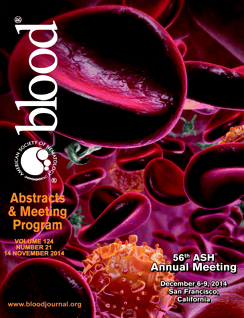Abstract
Introduction: Neonatal alloimmune neutropenia (NAN) is a potentially lethal disorder that results from maternal alloimmunization to human neutrophil antigens (HNAs) present in the fetus. The alloantibodies more frequently involved in NAN are against the HNA-1 and -2 systems; however HNA-3, HNA-4 and HNA-5 systems have also been associated with cases of NAN. In this study we examined the frequency of neonatal neutropenia and investigated the presence of maternal anti-HNA-1, anti-HNA-3 and anti-HLA alloantibodies when neonatal neutropenia and maternal-fetal incompatibility to HNA-1 and HNA-3 systems were observed. Furthermore, we investigated the association between neutrophil alloimmunization and HLA-DRB1 alleles.
Methods: A cross sectional study included samples from 10,000 unselected neonates born in 4 obstetric units in Sao Paulo City (Brazil). Neonatal neutropenia was defined as neutrophil count <1.5x109/L in cord blood. Genotyping studies were performed in 88 neutropenic newborns and their mothers (83 mothers with 3 pairs of twins and 1 triplet) by PCR-SSP technique for the detection of HNA-1a, -1b and -1c alleles and by PCR-RFLP technique for the detection of HNA-3a and -3b alleles; the PCR-RFLP technique amplifies the sequence for rs2288904 and the amplified product was digested with enzyme Taqα1 specific to nucleotide guanine that codifies the HNA-3a antigen (Lopes et al., Transfusion 2014;54(6):1619-21.). Serologic studies for detecting maternal HNA alloantibodies were performed in maternal-fetal incompatibility cases by granulocyte agglutination test (GAT) that was done in duplicate using a specific panel of donors previously genotyped for HNA-1 and HNA-3 systems. Anti-HLA-I/II antibodies were investigated in maternal serum, and all 83 mothers were genotyped for the HLA-DRB1 gene. Two control groups included mothers with maternal-fetal incompatibility but without alloantibodies, and healthy individuals.
Results: Neonatal neutropenia was identified in 88 of 10,000 (0.9%) newborns in the studied population. Genotyping studies revealed 39/88 (44.3%) maternal-fetal HNA incompatibilities corresponding to 28/88 (31.8%) for HNA-1 and 13/88 (14.8%) for HNA-3. In 12/28 (42.9%) cases we found incompatibility for the HNA-1a allele; in 9/28 (32.1%) for HNA-1b; in 4/28 (14.3%) for HNA-1c; in 1/28 (3.6%) for both HNA-1a and -1c; and in 2/28 (7.1%) for both HNA-1b and -1c alleles. In all neutropenic cases related to HNA-3 system mothers were typed as HNA-3a/a and neonates as HNA-3a/b. Using the GAT, HNA alloantibodies were found in 21/39 (53.8%) mothers including 16/28 (57.2%) anti-HNA-1 and 5/13 (38.5%) anti-HNA-3b. The specificity of HNA-1 alloantibodies was confirmed in 9 cases for anti-HNA-1a and in 7 for anti-HNA-1b. Anti-HLA antibodies were detected in 6/16 GAT(+) maternal serum containing anti-HNA-1 and in 2/5 GAT(+) with anti-HNA-3. Two maternal-fetal incompatibility cases occurred concomitantly for HNA-1 and HNA-3 systems; however, only anti-HNA-3b alloantibodies could be identified using the panel of donors. HLA-DRB1 genotyping showed an increased frequency of HLA-DRB1*01 and HLA-DRB1*10 alleles in mothers with HNA incompatibility when anti-HNA were not found. A statistically significant difference was observed between these mothers with HNA incompatibility not alloimmunized and the healthy individuals (HLA-DRB1*01 p=0.0433; HLA-DRB1*10 p=0.0208).
Conclusions: The observed frequency of neonatal neutropenia in Brazilians of 0.9% is similar to those described in North Americans and Europeans with a comparable positive serology rate of 53.8% more frequently due to the presence of anti-HNA-1 (76.2%). As for the best of our knowledge this is the first study reporting the presence of anti-HNA-3b alloantibodies in newborns with NAN (23.8%). The frequencies of the HLA-DRB1*01 and HLA-DRB1*10 alleles were increased in mothers with HNA incompatibility without HNA alloantibodies suggesting that such HLA-DRB1 alleles may confer protection against neutrophil alloimmunization in cases of maternal-fetal incompatibility for HNA systems involved with NAN.
No relevant conflicts of interest to declare.
Author notes
Asterisk with author names denotes non-ASH members.

